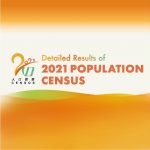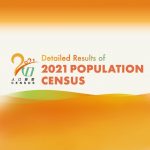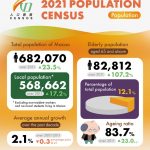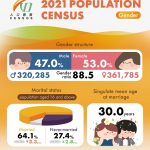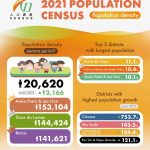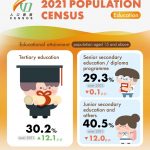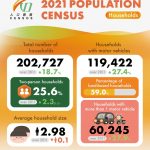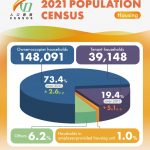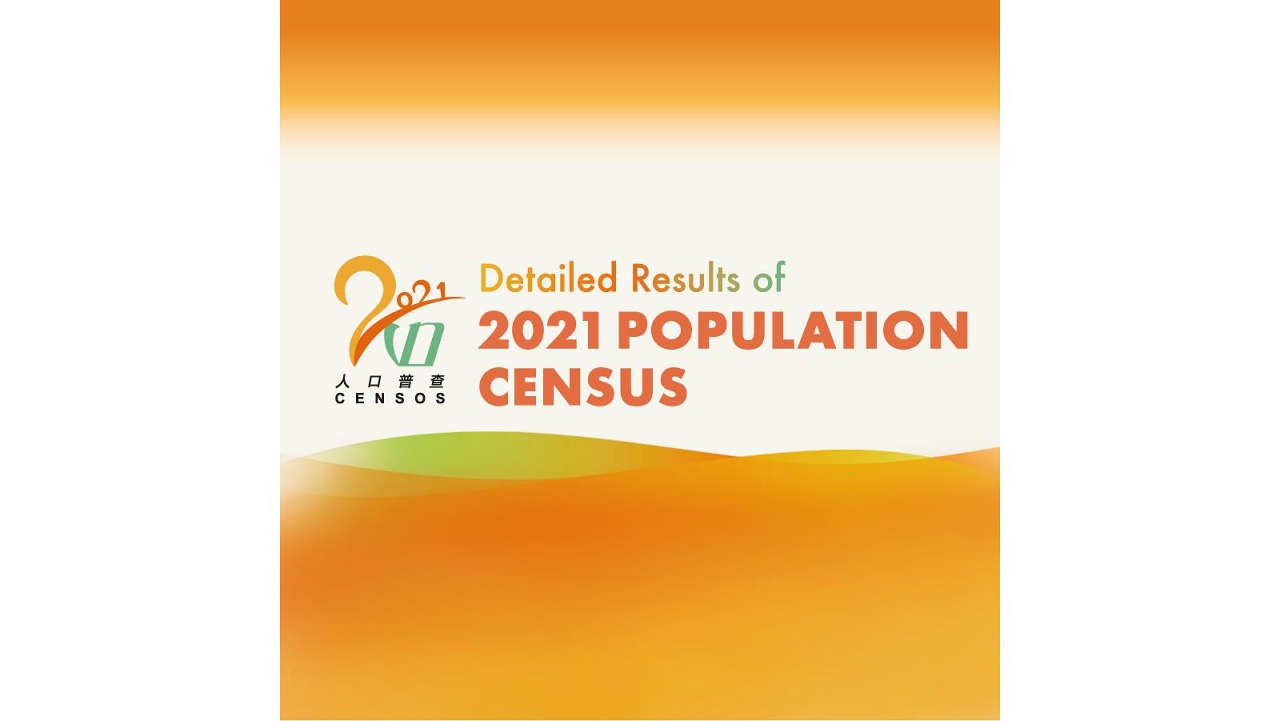
The Statistics and Census Service (DSEC) conducted the 16th Population Census and the 6th Housing Census in August 2021, with the aim of collecting detailed demographic information. Detailed results of the 2021 Population Census are released following the preliminary results announced at the end of last year. In addition, relevant data are uploaded to the Statistical Geographic Information System (GIS) and the Population Statistics Database of the DSEC website to facilitate quick access to population statistics.
Population growth slowed and population ageing continued
Total population of Macao was 682,070 in August 2021, an increase of 23.5% from 552,503 as in the 2011 Population Census; the average annual population growth rate over the past decade was 2.1%, a slowdown from the 2.4% growth during 2001-2011. When excluding non-resident workers and non-local students living in Macao, the local population totalled 568,662, up by 17.2% from 2011.
With continued population ageing in Macao, the elderly population aged 65 and above soared by 107.2% to 82,812 over 2011, accounting for 12.1% of the total population, up by 4.9 percentage points from a decade ago. Meanwhile, the ageing ratio surged by 23.0 percentage points to 83.7%.
Females outnumbered males and proportion of never-married population increased
Women and men totalled 361,785 and 320,285 respectively, taking up 53.0% and 47.0% of the total population. The gender ratio was 88.5. As regards the local population, the gender ratio dropped from 92.7 in 2011 to 88.7 in 2021, indicating a more apparent excess of females over males.
Of the population aged 16 and above, the proportion of those who were never married increased by 2.8 percentage points from ten years ago to 27.4%, whereas the proportion of married people decreased by 3.3 percentage points to 64.1%. The singulate mean age at marriage continued to rise, from 28.6 in 2001 and 29.0 in 2011 to 30.0 in 2021.
Population density rose and “Baixa da Taipa” had the largest population
Population density of Macao was 20,620 persons per km2, which was higher than that in 2011 (18,454 persons per km2). “Areia Preta & Iao Hon” (153,104 persons per km2), “Doca do Lamau” (144,424 persons per km2) and “Barca” (141,621 persons per km2) remained the most densely populated districts.
“Baixa da Taipa” has surpassed “Novos Aterros da Areia Preta (NATAP)” and “Areia Preta & Iao Hon” to become the most populated statistical district in Macao. These three districts accounted for 11.1%, 10.4% and 10.1% of the land-based population respectively. Meanwhile, “Coloane”, “Ilha Verde”, “Universidade & Baía de Pac On” and “Pac On & Taipa Grande” recorded the highest increases in population compared to 2011, at 753.7%, 143.9%, 124.4% and 121.1% respectively.
Level of education improved and population with tertiary education increased
The education level of the total population has improved over the past decade. In 2021, 30.2% of the population aged 15 and above attained tertiary education, at 175,956, nearly doubled (+99.9%) as compared to 2011; meanwhile, 29.3% completed senior secondary education/diploma programme and 40.5% completed junior secondary education or other education level.
Analysed by gender, 30.4% of the male population had attained tertiary education, slightly higher than the corresponding proportion for females (30.0%).
Household size shrank and 73% of the households lived in owner-occupied units
Total number of households was 202,727 in 2021, up by 18.7% from ten years ago. The average household size was 2.98, which showed a decreasing trend as compared to 3.08 in 2011 and 3.14 in 2001. Analysed by number of household members, two-person households predominated, comprising 25.6% of the total households, up by 2.3 percentage points from a decade ago.
There were 148,091 households living in owner-occupied units (referring to units belonging to household members), accounting for 73.4% of the total households, up by 2.6 percentage points over 2011. Meanwhile, tenant households totalled 39,148 and the corresponding proportion dropped by 5.1 percentage points from ten years ago.
With an increasing supply of public housing over the past decade, households living in economic housing (26,553) and social housing (12,963) leapt by 61.3% and 121.4% respectively compared to 2011. These households together made up 19.6% of the total households living in residential units, a growth of 6.4 percentage points over 2011.
Almost 60% of households owned a motor vehicle
Households with motor vehicles (motorcycle or private car) increased markedly by 27.4% from a decade ago to 119,422, making up 59.0% of the land-based households. Among them, households having more than one motor vehicle went up by 27.9% to 60,245 compared to 2011.


